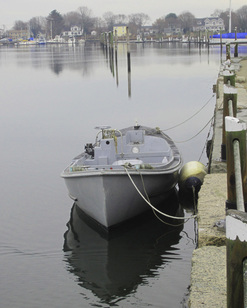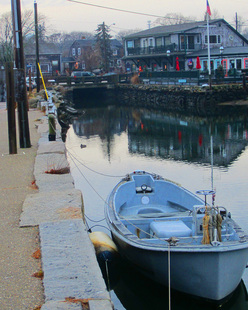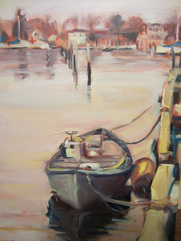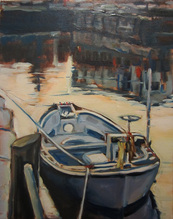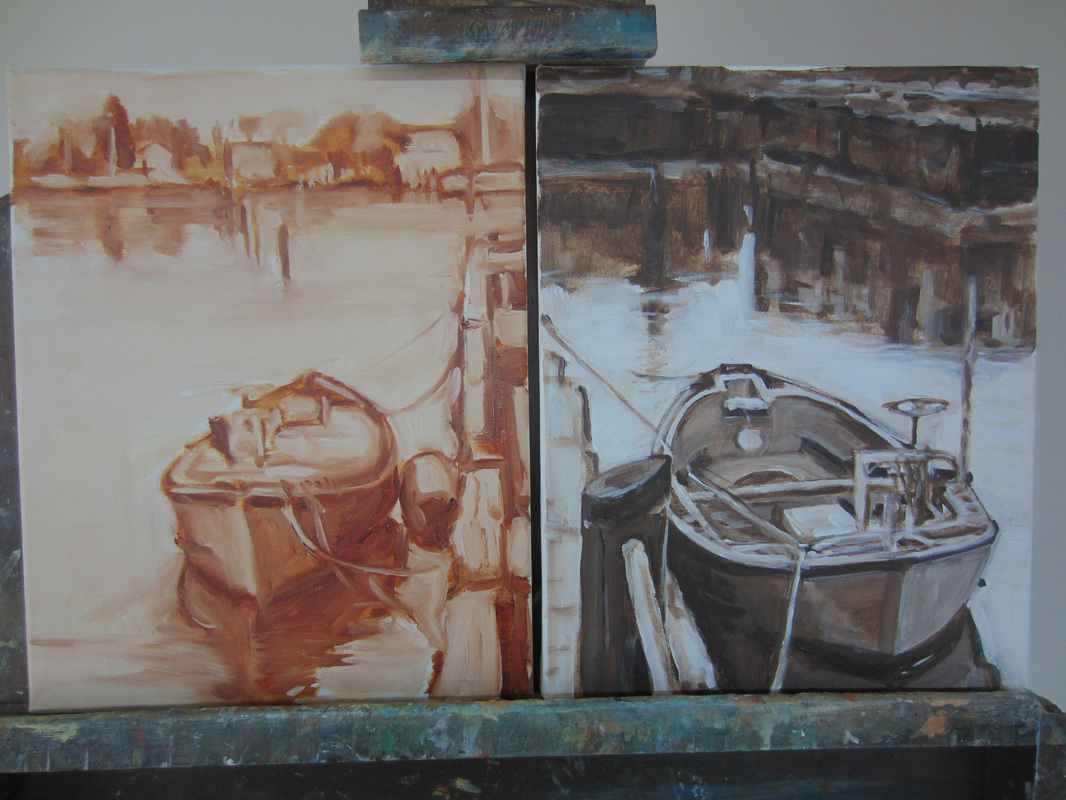
My work is done in three main stages:
Stage One: Identification of subject matter to paint. In this stage I will either work on site (en plein air) or use images captured by a small digital camera. Most often the camera images will be downloaded to my computer and processed by cropping (to match the canvas proportions), punching up hue and saturation of color as necessary, saving the image in two sizes: full size, and resized to about 800 pixels wide for web display, and then printing a work copy on 8x10 glossy photo paper.
Stage Two: Working from either what I see in front of me OR the processed image on 8x10 glossy photo paper, I will use umber or burnt siena and white acrylic paint to paint an underlayment (underpainting). The above images show work at this stage.
Stage Three: Using the underpainting, I will then paint a thin washed layer of burnt sienna (OIL) over the completed underpainting. I will use a rag or brush to wipe off areas to highlight whites and darks. This establishes the oil ground into which I paint and further refines the values. I may let this layer dry.. or paint directly into it, depending upon the number of layers desired. Finally, I will use oil colors to paint the final layer, being careful to limit the use of any opaque white which will lose the underpainting "layered" quality of the finished painting.
Stage One: Identification of subject matter to paint. In this stage I will either work on site (en plein air) or use images captured by a small digital camera. Most often the camera images will be downloaded to my computer and processed by cropping (to match the canvas proportions), punching up hue and saturation of color as necessary, saving the image in two sizes: full size, and resized to about 800 pixels wide for web display, and then printing a work copy on 8x10 glossy photo paper.
Stage Two: Working from either what I see in front of me OR the processed image on 8x10 glossy photo paper, I will use umber or burnt siena and white acrylic paint to paint an underlayment (underpainting). The above images show work at this stage.
Stage Three: Using the underpainting, I will then paint a thin washed layer of burnt sienna (OIL) over the completed underpainting. I will use a rag or brush to wipe off areas to highlight whites and darks. This establishes the oil ground into which I paint and further refines the values. I may let this layer dry.. or paint directly into it, depending upon the number of layers desired. Finally, I will use oil colors to paint the final layer, being careful to limit the use of any opaque white which will lose the underpainting "layered" quality of the finished painting.
